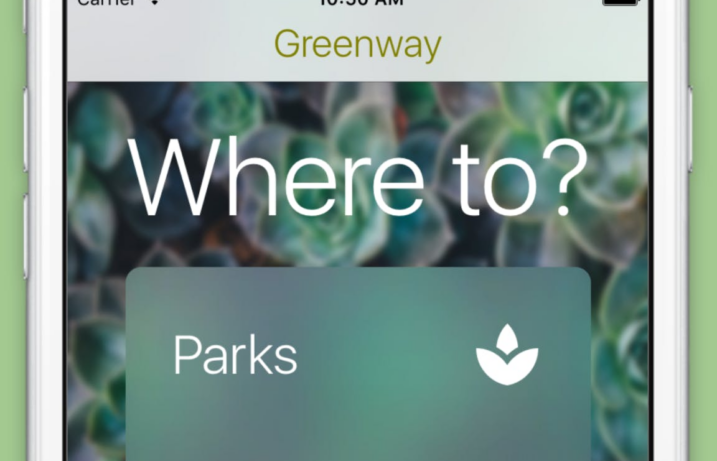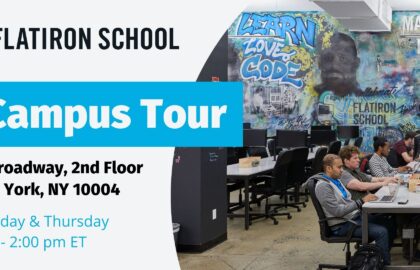Last week, students from Flatiron School’s immersive iOS program presented their final projects at our Science Fair to fellow students, instructors, members of the tech community, and employer partners. The student-built apps ranged in purpose but each showed just how far programming students can come in a few months if they’re passionate about learning the craft. For these final projects, students utilized the Swift programming language and partnered with organizations and companies including the White House and Vevo, receiving guidance, pragmatic constraints, and a sense of what it’s like to work as a development team for a real-world organization. And, indeed, these projects have real-world applicability. Instructor Ian Rahman explains, “Few things have been so rewarding as to watch students who'd never written a line of code push a project to the App Store. It’s amazing how well-designed the apps are, and each solves a legitimate problem in a unique way.” Today, we’re looking at a few apps that utilize open data from the White House to address public health issues.
Greenway
Laticia Chance, Kenneth Cooke, Jordan Kiley, and Ehsan Zaman created Greenway to help New Yorkers get outside and take advantage of the abundance of often-overlooked green space. The app, available for download on the App Store, leverages data provided by Data.gov to connect New Yorkers with parks, farmers markets, and community gardens in hopes of promoting outdoor activity and emotional well being.
Inspiration for the app
While the group had come up with quite a few ideas involving education and nutrition, they came together around Jordan’s idea for a community gardens app that could help people participate in their communities in a civic-minded way. Kenneth admits that he didn’t know much about gardens coming into Flatiron School, but he had been making a habit of eating his lunch outside every day during the program. “It was a huge stress reliever throughout a hectic process,” he says. “I wanted more people to know what was available to them in terms of green space in NYC.”The process of building Greenway was driven by collaboration. “Inspired by initiatives in local communities to get people in the city eating better, Laticia came up with the idea of including farmer's markets,” describes Kenneth. “Ehsan picked up the healthy eating thread and ran with it by building a Yelp integration that helps people find the top healthy food options near the park, market, or garden that they plan to visit.” (While the Yelp integration didn't make it into version 1.0 of the app, it’s at the top of the to-do list for their next release.)
What’s next for Greenway?
“We will definitely keep working on it,” says Kenneth. “We've built something that we want to use and the reaction has been excellent.”In addition to Yelp integration, the group plans to show users wifi locations within the green locations as well as nearby public restrooms. “Once we’re done adding features, users will have no excuse to stay indoors when there's a beautiful city to enjoy right outside,” says Kenneth.
Learning to code
Collectively, the group had little coding experience before attending Flatiron School. Laticia was an English major working in various roles at an independent school in Brooklyn. It was there that she discovered coding and loved how challenging it could be. Kenneth ran education programs for Apple and Estee Lauder. “After 9 years in technology-oriented education, I wanted to contribute and actually make technology,” he says. Jordan, on the hand hand was working in theater. “Before that I was an international relations major, so coding is a whole new world,” she says. Ehsan says he had “no coding experience. I had tried picking up languages like Java but ultimately gave up. My college also didn't have a CS program—and then I discovered Flatiron.”
Walkmore
Created by Michael Amundsen, Ryan Cohen, Sergey Nevzorov, Elli Scharlin, Walkmore helps users create interesting walking paths. As they describe on the App Store: “Enter a desired starting and ending location and users will be presented with a variety of points of interest that they can explore on the way. Users can also track their walks and save the workouts to Healthkit.”
Inspiration for the app
According to Michael, his group wanted to act on the Surgeon General’s call for more apps that improve emotional well being. “We were all excited about the idea of inspiring users to get out and see their neighborhoods,” he says. “And that turned into trying to find ways to show users interesting things along their walks that they may not know are there.”Working with the White House and Surgeon General on the project was a valuable experience. “They gave us a lot of freedom,” Michael says, “but were super excited about our idea!”
What’s next for Walkmore?
“Being an open source project, I believe the project will continue in some form or fashion,” Michael says. At the moment though, the team’s immediate focus is on trying to improve on the feature set they already have. “We plan to make improvements to the ‘point of interest’ data the app presents along the walk, as well as make the path creation process a little more streamlined. We would love to eventually add point of interest type filters and social features—paths you can share with your friends and community.”
Stay tuned for more incredible apps from Flatiron Students! And if you're interested in creating your own iOS apps like these, take a look at our brand new, free Swift course.




